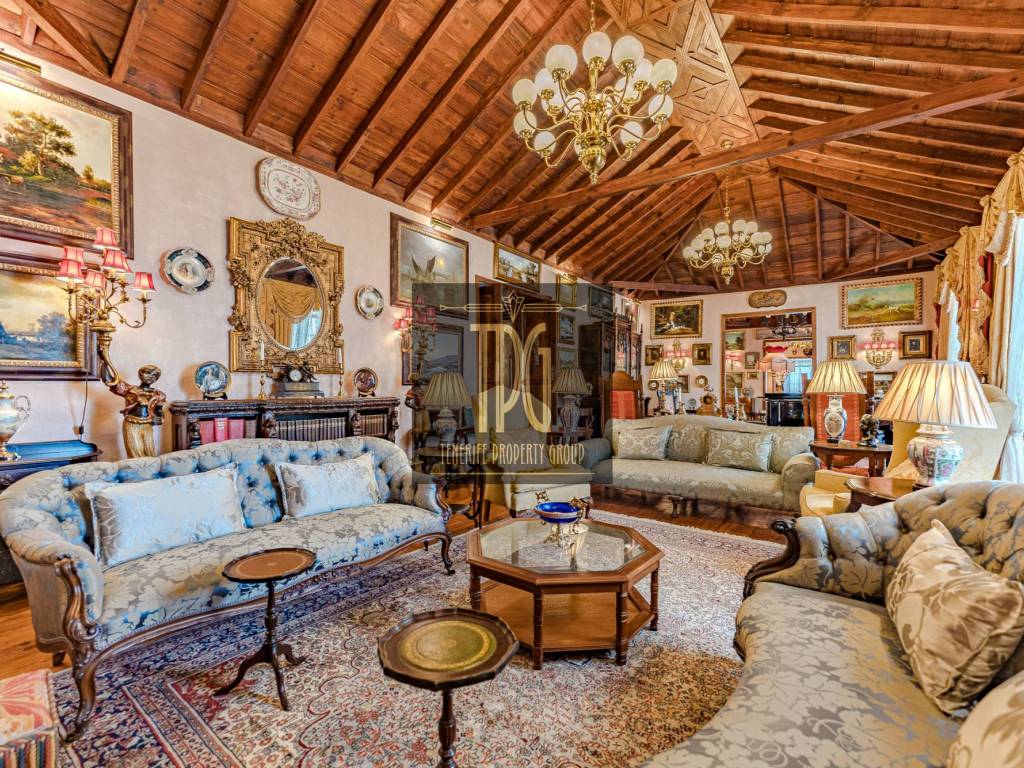1/15


Note
Listing updated on 11/21/2024
Description
reference: 181455998-OPS1625
This mansion, dating back to 1670, was originally built for the Military Governor on the island. After a volcanic eruption in 1706 shifted the island's port operations to Santa Cruz, the mansion lost its original purpose. Its subsequent use is unclear, but records indicate a small shop operated there in 1923. Acquired by the current owners in 2004, the mansion underwent an 18-year restoration, utilizing original stone and Tea wood native to Tenerife and La Palma Islands. The ground floor, once a stable, now houses the India Room and Study, featuring artifacts from India and memorabilia of Admiral Nelson. The central patio, adorned with a fish pond and fountain, grants access to various rooms and the Gallery displaying Virgin Mary paintings and Masonic chairs. The outdoor space includes en-suite bedrooms, a shaded patio, and a garden with a water tank. A stone staircase leads to the first floor, where interconnected rooms are lavishly furnished with antiques. The kitchen, a blend of charm and modernity, boasts all-electric appliances. The second floor features a library with a diverse book collection. Two doors open onto a roof terrace with panoramic views. The garden, with a street entrance, is classified as urban land, allowing potential development with proper planning permission. The tranquil neighborhood, situated at the end of a dead-end street, includes the Chapel of Las Angustias, housing the renowned statue of Mary of Angustias. The property's classification permits development, and past planning consent for a double garage may be revisited, depending on the main house's use.
Features
- Type
- Country house
- Contract
- Sale
- Floor
- Ground floor
- Surface
- 900 m²
- Rooms
- 5+
- Bedrooms
- 6
- Bathrooms
- 3+
- Furnished
- Yes
- Balcony
- No
- Terrace
- No
Price information
- Price
- € 3,300,000
- Price per m²
- 3,667 €/m²
Energy efficiency
Energy consumption
999 kWh/m² yearG
Emissions of CO₂
999 kg CO₂/m² yearG
Additional options













